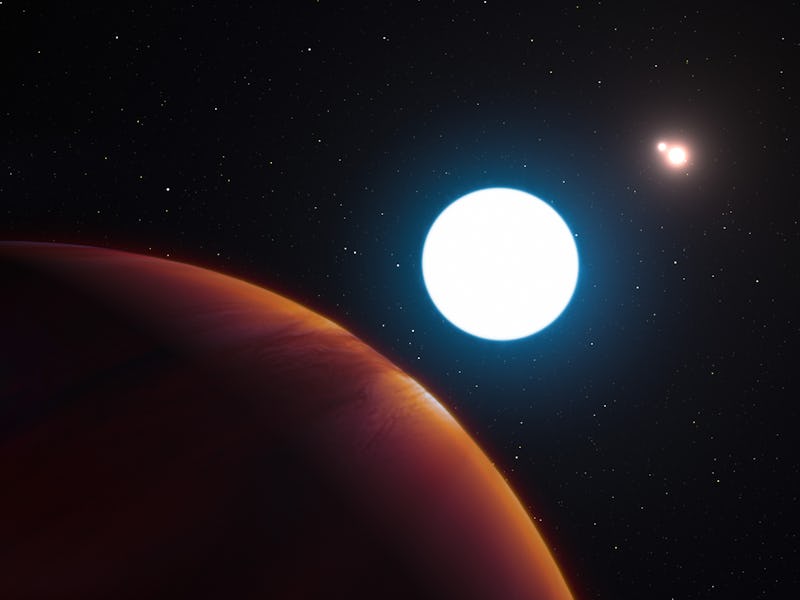There's a New Planet With Three Suns
This new exoplanet makes Tatooine seem boring by comparison.

On Thursday, a team of researchers published their discovery of the exoplanet HD 131399Ab, in Science. What the planet lacks in name it more than makes for with star quality: namely, it’s chilling with not one, not two, but three suns.
Nothing quite like HD 131399Ab has ever been seen before, and it opens a door to the study of planetary formation and movement between orbits in dynamic multi-star systems, which are way more common than you might think and are surprisingly underexamined.
“It’s really unexplored ground — unexplored space,” Kevin Wagner, a graduate student at the University of Arizona and lead author on the discovery, said. “Certainly having this rich example could teach us a lot.”
An artist's impression of the orbit of HD 131399Ab. You can see the tiny dot of light that is HD 131399Ab circle around the bright A star, and pass in between the A star and the spinning BC star pair.
It is still unclear how HD 131399Ab formed to get its unusual orbit. In the three star system, HD 131399Ab orbits the single A star, and passes in between the A star and the BC star couple. Wagner and his team have several theories about how HD 131399Ab could have formed around one of the stars, where it was then ejected into its current orbit.
A planet that crosses in between two stars – let alone three – has a huge chance of getting ejected either out into space, or into one of the stars. HD 131399Ab is apparently stable, despite the fact that it has a surprisingly wide orbit. Wagner says he thinks HD 131399Ab’s orbit is right on the boundary of what can be stable, but the research team needs to do more analysis of HD 131399Ab’s orbit to actually understand how it works and how it was formed.
Even though it had three suns with it, HD 131399Ab was not an easy find. Searching for exoplanets is like looking for your lost keys on a dark street, says Veselin Kostov, a NASA postdoc studying exoplanets at the Goddard Space Flight Center. You look under a streetlight first — not because your keys are most likely to be there, but because that’s the easiest place to look. As our methods for finding exoplanets have gotten better, we’ve found more street lights (metaphorically). Suddenly we can find planets in parts of space that we’d never dreamed of finding, like HD 131399Ab. And from these planets, Kostov says, “We learn about the origin, the history, the evolution, the future of planets in general.”
At least half of the stars in the universe are multi-star systems, says Kostov. “It’s very interesting because the discovery tells you that there are planets everywhere regardless of how many stars there are.”
Because of the discovery of HD 131399Ab, “I think there’s going to be more attention to these star systems that have been overlooked in the past,” Wagner added. “We don’t really know how many of these are out here yet.”